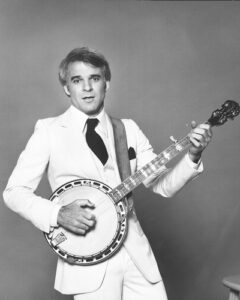Today’s post comes from Calvin Lamothe, class of 2017 and Art Center Student Docent.
On April 11 at 5:30pm, Vassar students, museum employees, and community members alike crowded into Taylor Hall to hear William Sharpe’s opening lecture for the Art Center’s current exhibition Mastering Light: From the Natural to the Artificial. Sharpe is a professor of English and American Studies at Barnard College, Columbia University, with particular interests in urban studies and the visual arts. He recently published a book entitled New York Nocturne: The City After Dark in Art, Literature, and Photography. His lecture utilized his knowledge of the arts and of urban spaces to illustrate the importance of light in more than fifty works, many of which are featured in the Mastering Light exhibition.
Sharpe began by dividing the lecture into different time periods. First, he discussed art created before the widespread use of artificial light. Light in many works from this period originates in the moon, and Sharpe noted that if the artist was clever, the moon’s reflection in a body of water added another source of illumination. Light was also commonly used in art to represent the divine; this concept is especially visible in John Martin’s print The Angels Guarding Paradise at Night (1826), in which the angels radiate a brilliant light. Many works in the show from this period also showcase the soft glow of daylight, such as Charles Courtney Curran’s Shadow Decoration (1887). In Curran’s painting, light illuminates the model and her clothesline and also allows for the shadow of a tree to show through the sheets hanging on the line, highlighting the Japanese influence on the painting.

Sharpe then delved into the ways that the invention of gas and oil lights, and later the light bulb, influenced art. Not only did these innovations produce irreversible changes in culture, they also provided new inspirations for artists. Light in some cases was even the subject of satire, as it is in Thomas Rowlandson’s political cartoon A Peep at the Gas Lights in Pall-Mall [1809?]. Peep portrays a host of different characters, ranging from the businessman to the prostitute, reacting very strongly to the new gas lamps that have been installed.
Sharpe also discussed artists’ reactions to electric light, focusing on Luna Park at Coney Island, an amusement park with hundreds of light bulbs outlining every structure. He highlighted the work of Joseph Stella, an American painter who created many works depicting Luna Park. One of his paintings, Battle of Lights (1913-14) is a part of Mastering Light, on loan to the Art Center from the Museum of Modern Art. Battle of Lights is a pointillist work in which Stella uses tiny, multicolored dots of paint on a dark canvas to represent the many twinkling lights at Luna Park.
As Sharpe and exhibition curator Patricia Phagan have pointed out, light serves an immense number of purposes in art. From the divine to the everyday, from the natural to the artificial, light is a source of illumination in more than one sense of the word. Sharpe’s lecture highlighted the uses of light in a large cache of works, and served as the perfect opening for the Mastering Light exhibition.




